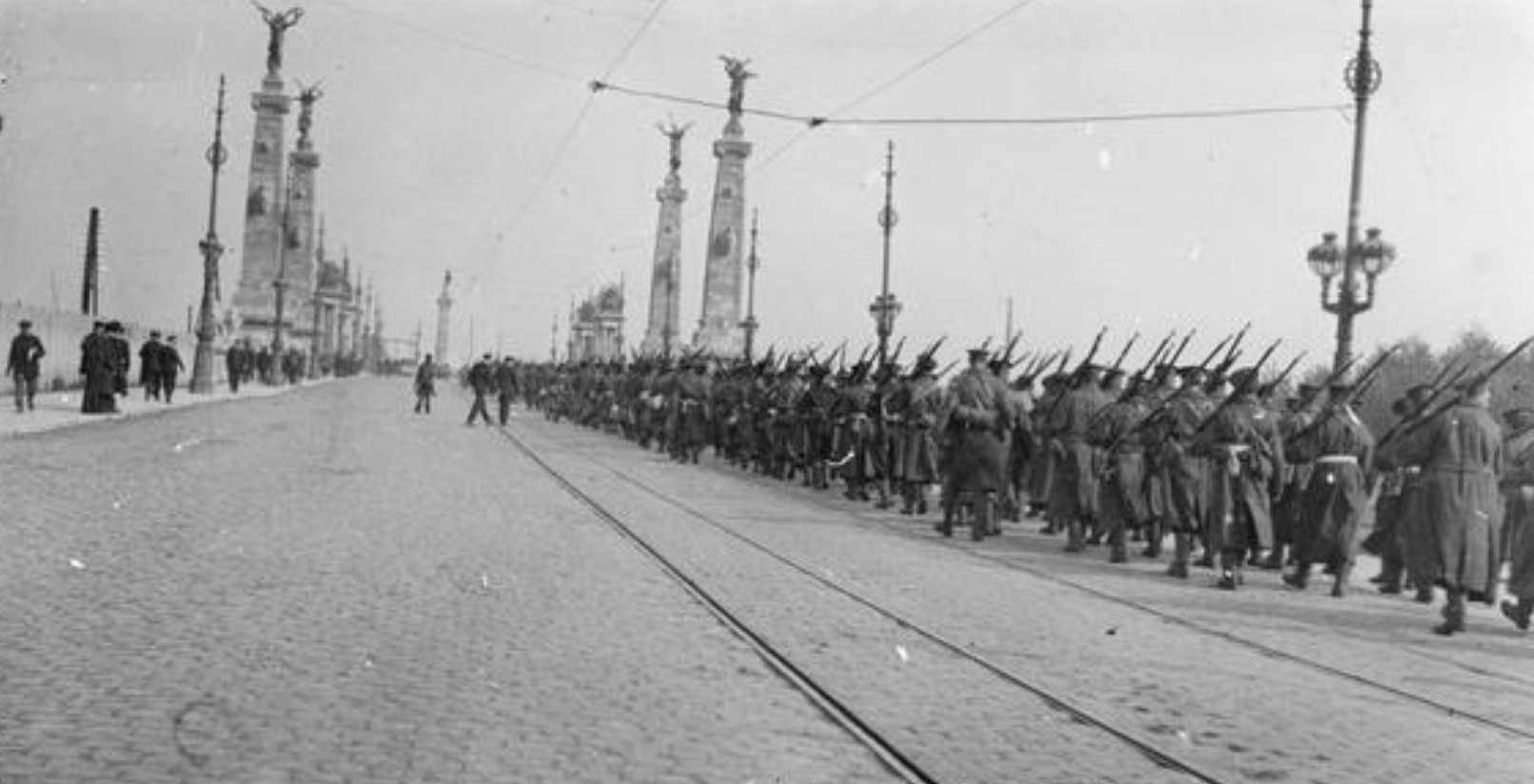The Division eventually reached Bruges and Ostend by using numerous routes and was back in England by the twelfth. Not knowing the facts of the withdrawal, the public was very critical of the Royal Naval Division, pointing to the loss of Antwerp and the Division's total of 2,627 casualties as proof of its inefficiency. The First Lord of the Admiralty issued a statement defending the Division and citing its achievements during the expedition, namely how the Division had been successful in delaying the advance of the Germans, allowing forces to gather in strength at Ghent to oppose the enemy and in resting the Belgian Field Army. The final statement of the message would prove very prophetic.
|
The Belgian people will never forget that the men of the Royal Navy and Royal Marines were with them in their darkest hour of misery, as please God, they may also be with them when Belgium is restored to her own by the Armies of the Allies.
|
With the Division back in England, the brigades returned to their training camps until a new Divisional camp was completed at Blandford. The Marine Brigade was at Gravesend, Browndown, Tavistock, and Deal; the 2nd Brigade at Betteshanger, where new drafts from Crystal Palace would join it; and the Drake Battalion at Walmer. Work could now commence on turning the Division into a mobile, rather than a fortress, unit, and it was decided to create a self-supporting division. |

Howe Battalion marching into Ostend | | IWM Cat Ref: Q 14784 |
|

Blanford camp |
The first task to be undertaken was the recruitment of personnel to replace the losses sustained by the Hawke, Collingwood, and Benbow battalions, as well as to staff three new reserve battalions. The Divisional depot was reorganized to allow for their training, and a reserves depot was created to supply the Division in the field. The Division had to provide for the reinforcement, reorganization, and training of the existing five Naval battalions and ensure that these men were properly equipped. The methods employed by the Division to train new recruits, both officers and men, would later be adopted by the military authorities.
Once preliminary training was complete, the 2nd Brigade went into barracks, with Nelson at Portsmouth, Anson at Chatham, Hood at Plymouth, and Howe at Portland. The Drake Battalion was posted to Alnwick for coastal defence duties.
As the Blandford camp neared completion, the Nelson Battalion arrived on November 27th and was followed by the remaining Naval battalions. During December, these battalions were issued active service uniforms and equipment. The Divisional train was formed, and the personnel of the field ambulances, recruited from civilian life, were placed in training. There were plans for a corps of cavalry, but this was later replaced by a Divisional Cyclist Company. There was still no Divisional artillery. The Hawke, Benbow, and Collingwood battalions continued to receive preliminary training at the Crystal Palace depot. |

